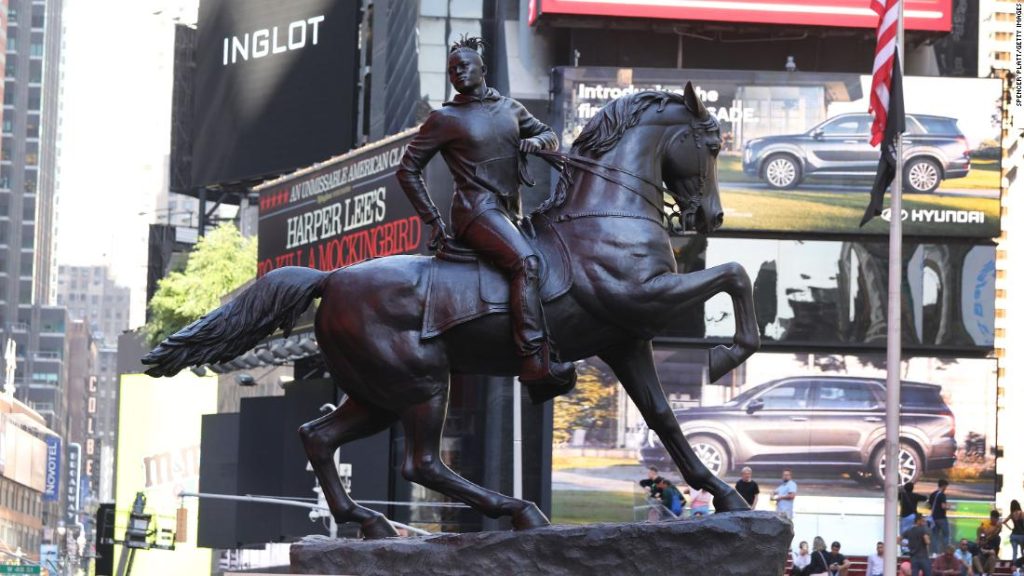Talk about disrupting the norm!
According to the New York Times, artist Kehinde Wiley just unveiled a new statue in Times Square depicting an African American man with locs riding on a horse.
The sculpture is the first public work displayed by Wiley, most famously known for his realistic portraits of Black people, including a painting of President Barack Obama hanging in the Smithsonian National Portrait Gallery.
The “Rumors of War” sculpture depicts a modern day warrior. His strong features frame his face perfectly. The warrior has a half head of locs tied in a bun atop his head and he’s donning regular street wear, a hoodie and ripped, slim fitting jeans.
The statue is Wiley’s largest yet, coming in at 27 feet high and 16 feet wide. He said he drew inspiration from the heroic equestrian statues of Confederate generals that line Monument Avenue in Richmond, Virginia, which is exactly where the sculpture is headed. It will stay posted in Times Square until December, before being carried some 300 odd miles to be permanently installed at the entrance to the Virginia Museum of Fine Arts on Arthur Ashe Boulevard which crosses Monument.

Photo Courtesy of Rachel Papo/The New York Times
The idea for the sculpture first came to mind when Wiley visited the Virginia museum for his exhibition “Kehinde Wiley: A New Republic.” Wiley was taken aback by a statue of a Confederate general that conveyed this notion of Confederate states being “noble targets of Northern aggression.”
“I’m a Black man walking those streets [and] I’m looking up at those things that give me a sense of dread and fear,” Wiley told The New York Times. “I felt that there had to be some way to turn this ship around. Maybe I can’t do it as one person, but this is my way of intervening, of saying ‘Enough already.’”
The sculpture will sit just mere blocks away from Confederate statues. It is a symbol of hope. Even the street where it will reside, named for tennis icon Arthur Ashe, was renamed in an effort to create a new type of legacy. Alex Nyerges, director of the Virginia Museum of Fine Arts spoke about why he felt the sculpture was important for the times we’re living in.

Photo Courtesy of Rachel Papo/The New York Times
“The oppression of African-Americans is still pervasive in our society. But if anyone is going to take on the mantle of trying to change the conversation and make things better for the present and the future, I can think of no better place to start,” Nyerges said.
Starting with the reclaiming of narratives is a great place to start. This idea of a hero that resembles everyday people who fight on the front lines, is a more relatable norm in 2019. With so many protests and civic organization led by young people of color, Wiley’s statue reclaims what heroes, generals and monuments should look like.
Gerry Atumeyi, an onlooker and fellow Nigerian and New Yorker like Wiley said “You just don’t ever come across sculptures like this in the States. To see someone from the African-American community who is able to do that is really inspiring.”

Photo Courtesy of Rachel Papo/The New York Times
Wiley hopes that his sculpture brings a deeper understanding of American heroism and inspires and empowers everyone who sees it saying, “Today, we say yes to something that looks like us. We say yes to inclusivity. We say yes to broader notions of what it means to be an American.”
We say yes to you Kehinde Wiley!
Photo Courtesy of CNN

